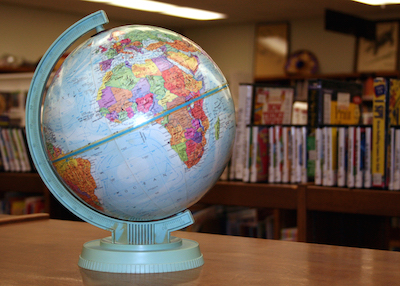What are Dual Language Immersion Programs?
Today, Dual Language Immersion (DLI) programs are an increasingly popular model for bilingual education in K-12 education. In 2000, U.S. Education Secretary Richard Riley stated, “We need to invest in these kinds of programs… In an international economy, knowledge, and knowledge of language, is power.”
Since then, the number of DLI programs in the U.S. is estimated to have reached 2000, and the model has been praised by researchers as being an effective curriculum for second language acquisition and fluency.
If you are a parent or guardian considering the possibility of enrolling your child in a bilingual education program or if you are interested in bilingual education in general, here are some DLI program basics and why it is an effective model for students.
What is DLI?
Dual language education is structured so that “students are taught literacy and academic content in English and a partner language,” according to the Center for Applied Linguistics (CAL). In such an educational environment, students simultaneously develop language and literacy skills both in a second language and in their native language.
In general terms, DLI programs are made up of native speakers of English as well as native speakers of another language, and students spend the majority of time together (Gomez, Freeman & Freeman, 2005). The balance of instruction time between the two languages varies between programs. In the two-way immersion (TWI) model, for example, students receive instruction in English for 50% of their day and in the second language for the other 50%.
Students only receive instruction in one language per class period, rather than randomly switching back and forth during instruction, according to CAL. Students begin the DLI programs as early as possible in their education—in preschool, kindergarten, or the first grade—and continue their study in both languages for at least five years, with the potential to continue all the way through the 12th grade.
In the majority of DLI programs in the U.S., the second language is Spanish. However, there are programs that offer second language instruction in a variety of languages, including Mandarin, Cantonese, Korean, Japanese, French, Italian, and German. To locate a specific program, the CAL’s directory of two-way immersion programs in the U.S. is an excellent resource.
What are the benefits of DLI?
Students gain many advantages as a result of becoming bilingual through a DLI education, including:
- Higher academic and cognitive functioning than monolingual students.
- Greater comfort when interacting and communicating with people from other backgrounds and cultures.
- Higher levels of achievement in their native language.
- More positive outlooks about school.
- Future career benefits and opportunities.
A common concern in the discussion of DLI programs and bilingual education in general is that students might demonstrate lower English language test scores and performance measures in comparison with students who receive English-only instruction. However, research demonstrates that students in DLI programs perform as well or better on achievement measurements such as state-wide standardized tests, according to San Jose State University Professor Kathryn Lindholm-Leary, Ph. D.
DLI programs are also an effective model for helping English Language Learners (ELLs) reach high levels of achievement. Compared to other models of English language immersion where ELL students receive little or no instruction in their native language, research suggests that when enrolled in DLI programs, these students reach higher achievement levels than ELL students in English-only immersion models.
Characteristics of successful students in DLI programs
Even though research shows that DLI programs are effective and beneficial for students, it is also important to consider what students must to to be successful in DLI programs. An effective model alone does not account for student success, and certainly DLI programs are not for everyone. According to the Boerne Independent School District, there are certain characteristics that professionals and parents have noted that are typically related to student success. These characteristics include:
- Eagerness to learn new things.
- Enjoying interacting with people from other linguistic and cultural backgrounds.
- Having parents who strongly support the DLI program, “parents who truly understand and embrace dual language and its goals will transmit their positive attitudes to their children.”
- Recognition that learning a second language can be tough, and a willingness to take risks when speaking and writing in a second language.
Students from all ethnic, socioeconomic, linguistic backgrounds, and with strengths in varying academic areas have been successful in DLI programs. There is no research evidence to suggest that a particular background inhibits success in a DLI program.
Photo by click at morguefile.com





4 Comments